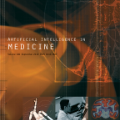Physical Unclonable Functions (PUFs) have been proposed as a way to identify and authenticate electronic devices. Recently, several ideas have been presented that aim to achieve the same for quantum devices. Some of these constructions apply single-qubit gates in order to provide a secure fingerprint of the quantum device. In this work, we formalize the class of Classical Readout Quantum PUFs (CR-QPUFs) using the statistical query (SQ) model and explicitly show insufficient security for CR-QPUFs based on single qubit rotation gates, when the adversary has SQ access to the CR-QPUF. We demonstrate how a malicious party can learn the CR-QPUF characteristics and forge the signature of a quantum device through a modelling attack using a simple regression of low-degree polynomials. The proposed modelling attack was successfully implemented in a real-world scenario on real IBM Q quantum machines. We thoroughly discuss the prospects and problems of CR-QPUFs where quantum device imperfections are used as a secure fingerprint.
翻译:作为识别和认证电子装置的一种方法,提出了不可变物理功能(PUFs)的建议。最近,提出了若干旨在达到对量子装置同样目标的想法。有些建筑工程采用了单方位门,以提供量子装置的安全指纹。在这项工作中,我们利用统计查询(SQ)模型,正式确定经典读读量子体(CR-QPUFs)类(CR-QPUFs),并明确显示CR-QUFs在单一Qbit旋转门的基础上的安全性不足。当敌人能够进入CR-QPUF时,我们演示了恶意方如何通过使用低度多元度的简单回归进行模拟攻击来学习CR-QUF特性并伪造量子装置的签名。拟议的模拟攻击在真实的IBM Q量子机器的现实世界情景下成功实施。我们透彻地讨论了CR-QUFs的前景和问题,即量子装置的不完善性作为安全的指纹。



